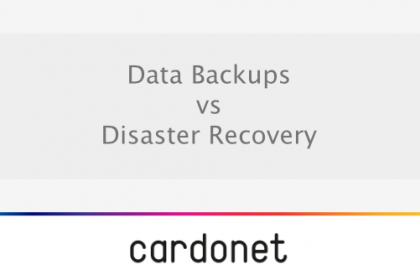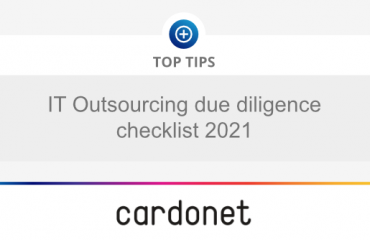
Now more than ever before, your business is reliant on technology for continuity. Data loss and security breaches are an increasingly common problem for many businesses. Data backups and disaster recovery plans are therefore an integral part of your business; any downtime caused by technology failure is costly and causes loss of productivity.
Disasters happen, no matter how hard we try to prevent them. Whether it’s a natural disaster such as fire or flood, or a cyber-attack or virus, when disaster strikes, it is imperative that you have an effective disaster recovery plan to get your business up and running as soon as possible. There are, however, some key differences between simply backing up your data and having a disaster recovery plan.
Disaster Recovery (DR): DR is about having a technical solution and recovery plan in case of disaster, whether natural or induced by humans. A DR plan aims to maintain critical functions to ensure business continuity and minimise downtime while the disaster is being addressed.
Data backups: Backups are copies of data on other devices and in other locations. Backups are usually performed on a regular basis and ensure that you have access to copies of your data in case your primary data is lost.
Key differences:
- Different purposes. Backups and disaster recovery have different purposes. You make a disaster recovery plan to allow for quickly re-establishing access to data, software and applications in the event of a disaster. Disaster recovery allows you to get back to where you were pre-disaster as quickly as possible, whilst allowing business continuity during the disaster. Backups, on the other hand, are simply copies of data which allow for data retention and data archival. There are different types of backup which have different purposes. for example, backups can be full or incremental; cloud-based or hardware; offsite or local. Each of these is useful in its own way.
- Different RTO and RPO. RTO, or Recovery Time Objective, is the amount of time you aim to take to restore data after a disaster. RPO, or Recovery Point Objective, is the amount of data a company can afford to lose without serious consequences. Determining these is crucial to both backups and disaster recovery, however backups tend to have longer RTOs and RPOs, whereas they happen faster with disaster recovery.
- Resources. Backups are usually kept on the cloud or on hard drives. They take up minimal space as they are usually compressed and require little maintenance. In contrast, disaster recovery is a separate site which completely mirrors your IT infrastructure which allows a company to restore the entire system.
- Breadth. The difference between data backups and disaster recovery comes down to what they encompass. Backups are simply copies of data whilst disaster recovery refers to the entire system in place in case of disaster.
Choosing the right method of data recovery and creating a disaster recovery plan is critical for your business. A good place to start is the 3-2-1 rule of backup which ensures that your data is protected. Decide how frequently your data backups should occur and ensure that the backups are secure. If your business is not already using the cloud, now is a good time to migrate; backing up your data to the cloud is an excellent way to protect it.
Cardonet have been working with businesses for the past twenty years to help them overcome their technological challenges. Our group of highly experienced engineers are available 24/7 to assist and ensure that your IT infrastructure is running seamlessly.
If you need help with backing up your data and disaster recovery planning, call us on +44 203 034 2244 or +1 323 984 8908. Alternately, you can contact us online. We will be happy to help you overcome your IT challenges so that you can focus on what you do best.



You must be logged in to post a comment.